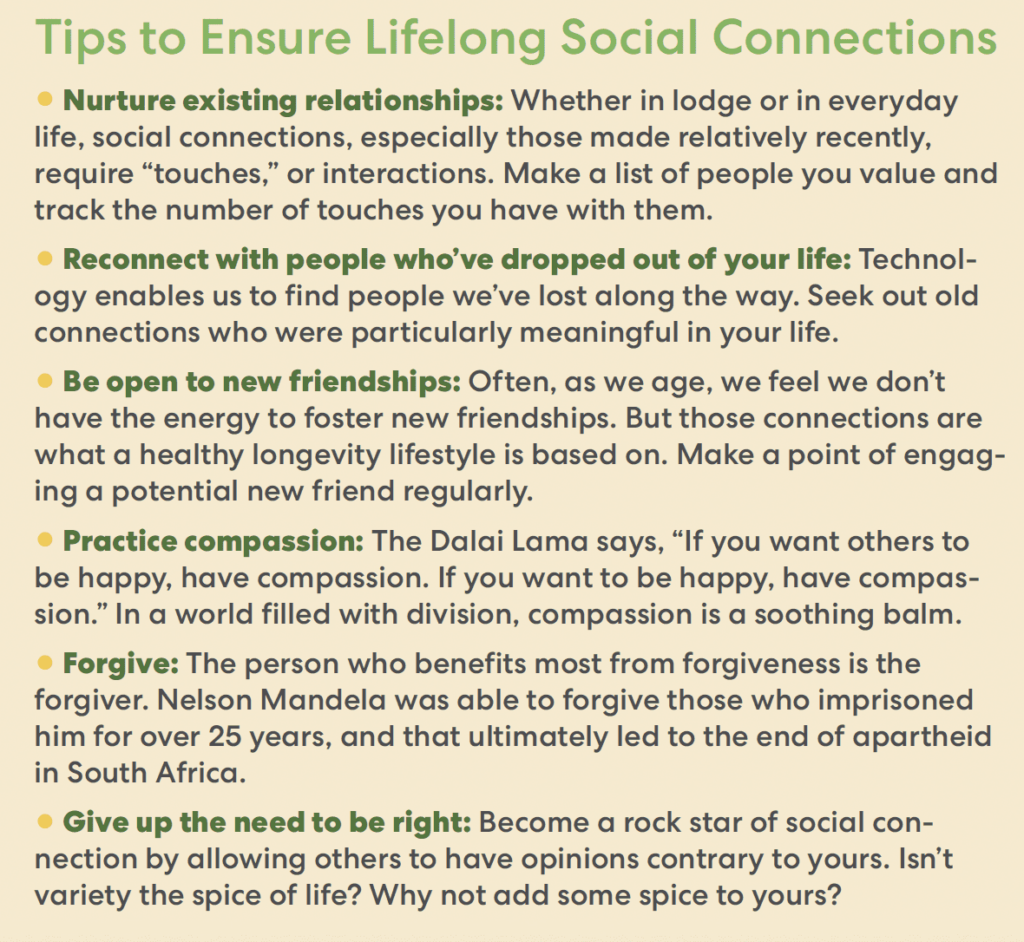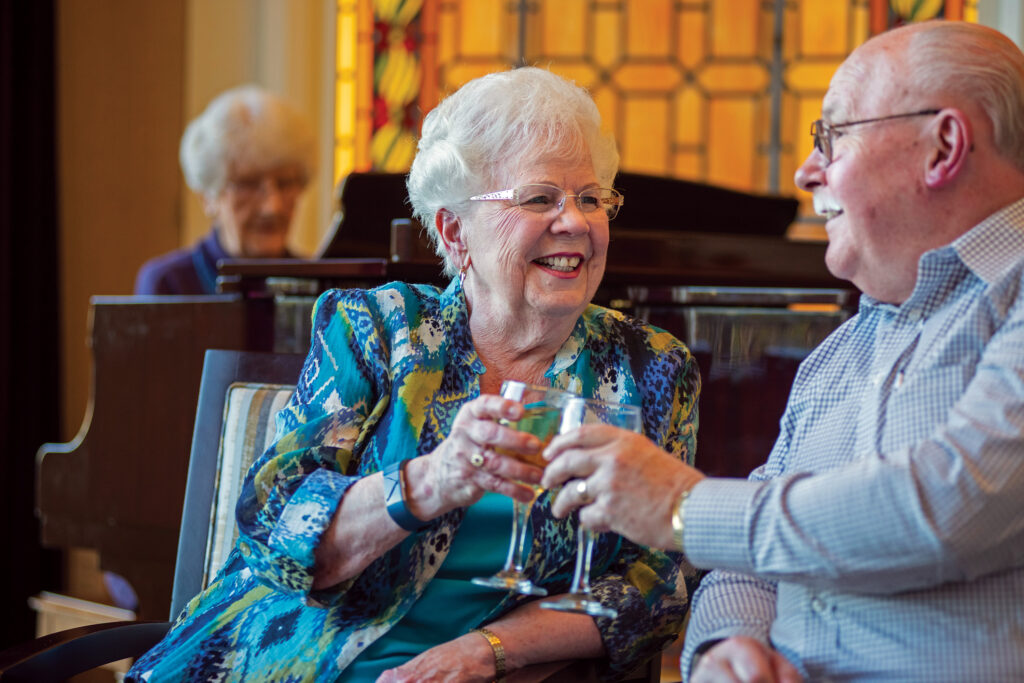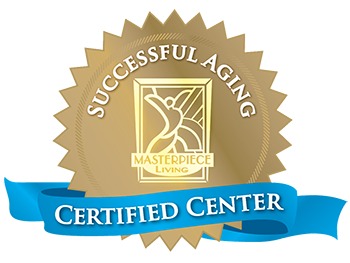This article from California Freemason magazine was contributed by guest author Dr. Roger Landry, MD, MPH, preventive medicine physician, author of the award-winning Live Long, Die Short: A Guide to Authentic Health and Successful Aging, and president of Masterpiece, a group of multidiscipline specialists in aging who partner with communities to assist them in becoming destinations for continued growth.
The African proverbs says it all: “If you want to go fast, go alone. If you want to go far, go together.”
We are better when we’re together. Despite people’s annoyances, despite their grievances, despite the grief we feel when we lose a loved one, we simply need connection. We need people around us to maintain our quality of life, to grow, and, yes, to be healthy.
For seniors and those in retirement, that need is even more pronounced.
And yet loneliness and social isolation are among the greatest public health crises facing seniors today—a hiding-in-plain-sight epidemic that contributes to cognitive decline, depression and anxiety, and shortened life expectancy.
That’s the real appeal of retirement communities like the Masonic Homes of California and Acacia Creek. By promoting social interaction and providing practically unlimited opportunities for residents to socialize, they give seniors access to the best medicine for staving off dementia, heart failure, and cancer: friends.
An Epidemic of Illness
We are social creatures and have been since our ancestors first walked the earth. Over eons, this requirement has been firmly entrenched into our DNA, and although the way we live has dramatically changed, we are still, at a basic level, wired for connection.
That’s where senior communities come in—and where they offer something even our cherished homes simply cannot.
Of course, we need alone time too. But at our cores, we need to be social to be healthy and fulfilled. The research on this is compelling. Multiple long-term studies have shown that without substantive social connection, we are up to between two and five times more likely to experience heart disease, cancer, dementia, and depression. Likewise, having solid relationships with at least a few people is associated with remarkably lowered risk of those same conditions. In other words, lacking social connection has a similar health risk as does smoking half a pack of cigarettes per day.
The Maasai people of Kenya have a saying: “We are not human unless we are with other humans.” Yet these days, loneliness has become commonplace, especially in old age. In the United States, more than a third of seniors experience serious loneliness. Britain and Japan have responded to numbers like that by appointing ministers of loneliness to identify causes and recommend interventions to deal with it as a public health threat. That remarkable response is motivated largely by the significant increase in health care costs associated with loneliness. It is important to note that loneliness and solitude are not the same thing. Loneliness is a negative condition characterized by a sense of pain and lacking. Solitude, on the other hand, is perceived as a positive state that is often uplifting and empowering.
During the pandemic, we all experienced first-hand the devastating effects of limited interpersonal connection. (In 2020, the rate of seniors reporting feelings of social isolation reached an all-time high—as much as 56 percent.) And although technology was a significant help in maintaining ties, it became clear to most of us that in-person interaction, with its nonverbal communication and physical contact, was what we missed most. MIT sociologist Sherry Turkle noted in her book Alone Together: Why We Expect More From Technology and Less From Each Other that technology is seductive in that it poses as a substitute for person-to-person interaction. But, she says, it’s the real, physical exchange we truly need. Simply being together and talking is her cure for the ennui of our modern age. Despite all the new, faster, and more convenient ways to communicate, we are becoming even more lonely—and suffering for it.
Friendship is the Key to Successful Aging
So why don’t more people surround themselves with others as they age? There are many reasons. But one in particular stands out. Put simply, we love our homes too much. Most of us have raised our families, followed our careers, and met the slings and arrows of life from the comfort of home. Even after our children leave, after we’ve retired, after our neighbors have moved or passed on, we remain in our homes, surrounded by memories, rituals, and familiar possessions. That stays true even as the frequency of outside interactions begins to fall and the costs of maintaining a home rises. We remain there as caretakers of the shrine to our past lives. We stay because of what happened there.
Statistics back this up: According to the AARP, a whopping 77 percent of those over 50 say they want to stay in their home long-term.
But that may not be the best decision, at least in terms of healthy longevity. Lifestyle is the single most important determinant to how we age. That refers to how much we continue to move, learn, connect with others, have purpose, and grow. Is that happening at home? For this chapter of life, the question is whether home is still the best place to be.
A trove of research suggests that we tend to reflect the lifestyles of those around us. It stands to reason, then, that seniors who want to age in good mental and physical health should try to be around others doing the same. We should seek out and surround ourselves with people committed to staying robustly connected while living lives that are full of purpose.
That’s where senior communities come in—and where they offer something even our cherished homes simply cannot.
For Successful Aging, Find a Place to Thrive
By the year 2050, a quarter of all Americans will be over 65. But to borrow a favorite old phrase, we’re not our grandmothers’ seniors. Today’s older adult doesn’t want to accept being marginalized by an ageist culture. They want to live longer stay healthier in order to enjoy that longevity.
Polling backs that up. Seniors today want to keep moving, learning, and having meaning in their lives. They want not only to survive, but thrive. How and where they’ll accomplish that is driven by a mix of factors, including demographics, personal preferences, and, it must be said, money. Places like active adult communities, naturally occurring retirement communities, senior-living and retirement communities, village movement communities, and senior co-housing arrangements all offer the promise of social connection.
But there is still a significant gap between what older adults want and what’s largely out there. A major difference from previous generations is that they now expect a customized approach to healthy aging from senior communities. Accordingly, the field of senior care is becoming more sophisticated, moving from a “cruise ship,” one-size-fits-all model to one in which well-designed, targeted resources are matched to each individual’s needs and preferences. Research-based and data-driven strategies to achieve healthy longevity are already providing a competitive edge for the best senior communities. Authentic social connection doesn’t just happen by having people live in proximity. It must be carefully crafted.
At places like Acacia Creek, they’ve been able to get ahead of that trend.
Driven by Successful Aging principles (a set of standards developed by the MacArthur Foundation) and certified as one of the few Centers for Successful Aging communities in the country, Acacia Creek has made social interactions a central feature of daily life. Crucially, they go beyond that by providing residents with a dashboard for feedback and tracking social outcomes for both the individual and the community as a whole.
When it comes to waging the invisible war against loneliness, Acacia Creek is fighting on a new front-line. In practice, that looks like welcome surveys that match new residents with groups, clubs, and courses; peer and intergenerational technology classes; and a robust calendar of social activities.
These efforts are backed up by research. At progressive retirement communities like Acacia Creek, they’re helping stave off the worst effects of the marginalization, social isolation, and health declines that so many seniors experience. And by replacing the negative view of aging with a proactive, positive perspective, it’s offering a vision of healthy aging we can all get behind.
Acacia Creek Retirement Community inspires residents to live an active, meaningful life. Our mission as a senior community is to enrich the independence, well-being, and security of our residents through exceptional services and care based on Masonic values.
To learn more about Acacia Creek or our senior housing opportunities, contact us at www.acaciacreek.org/contact





